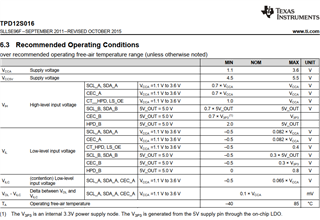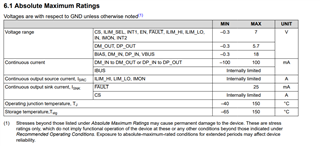Other Parts Discussed in Thread: TPD3S713-Q1
Hello,
We wanted to shorten the HDMI signal trace. As a result it was successful, but the CPU and TPD12S016 were located closer together.
When considering the maximum operating temperature of our product, at the TPD12S016 location, the PCB can exceed above 85°C due to the heat generated by the CPU. However, the ambient temperature does not exceed 85°C. Is this acceptable? Free-air temperature is within your specifications.
Or do you have products that can cope with higher temperatures?
Best Regards,
Yukio Oyama







